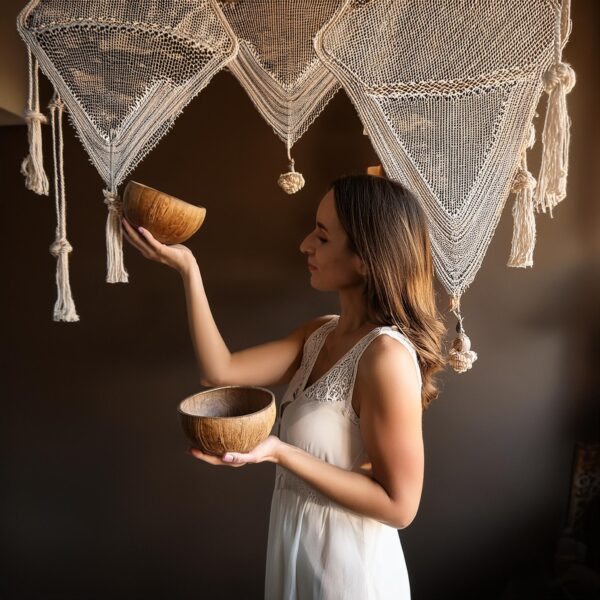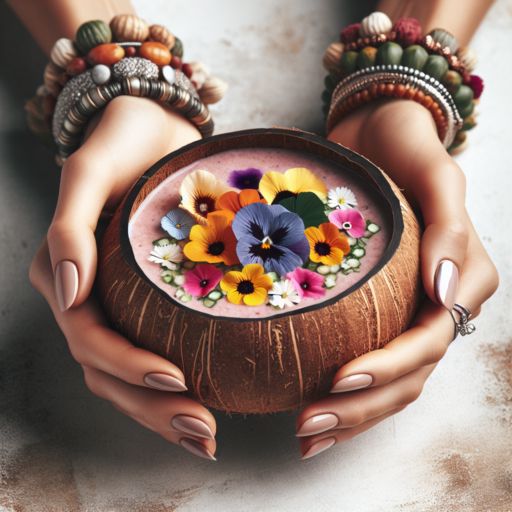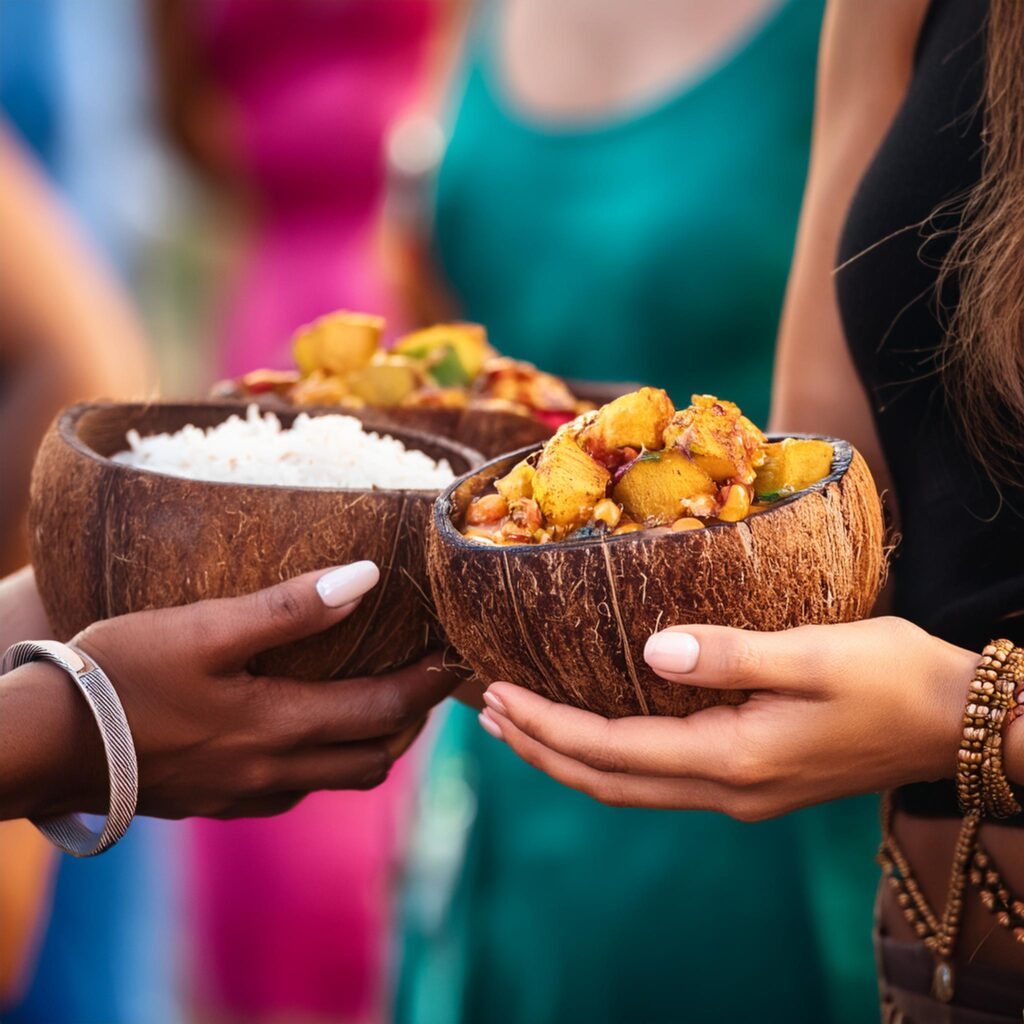Coconut Bowls vs. Traditional Dinnerware: A Comparison
An objective comparison between coconut bowls and traditional dinnerware, helping you make an informed choice for your lifestyle.
Coconut Bowls vs. Traditional Dinnerware: A Comparison
In recent years, coconut bowls have emerged as a popular choice for eco-conscious individuals looking to add a touch of nature to their dining experience. These bowls, made from real coconut shells, offer a unique alternative to traditional dinnerware.
But how do they stack up against the plates and bowls we’ve all grown up with?
In this comprehensive guide, we’ll explore the differences between coconut bowls and traditional dinnerware, examining aspects like sustainability, aesthetics, functionality, and cost. By the end, you’ll have a clear understanding of which option might be best for you and your lifestyle.
1. The Rise of Coconut Bowls
What Are Coconut Bowls?
Coconut bowls are crafted from the shells of coconuts that have been harvested for their meat and water. Instead of discarding these shells, they are cleaned, polished, and transformed into beautiful bowls. This process not only reduces waste but also creates a sustainable product that can be used in various ways.
Popularity and Trend
The popularity of coconut bowls has surged alongside the rise of sustainable living and eco-friendly products. They are particularly favored by those who embrace a zero-waste lifestyle, as well as food bloggers and influencers who appreciate their natural aesthetic. The bowls’ rustic charm makes them a favorite for serving smoothie bowls, salads, and other visually appealing dishes.
2. Traditional Dinnerware: A Staple in Every Home
Types and Materials
Traditional dinnerware typically includes items such as plates, bowls, and cups made from materials like ceramic, porcelain, glass, and melamine. These materials have been used for centuries due to their durability and versatility. Each type of material offers its own set of benefits and drawbacks, which we’ll explore later.
2.2 Cultural Significance
Dinnerware has a rich cultural significance, with different styles and patterns often reflecting the traditions and history of a region. From fine china used in formal settings to everyday ceramic plates, traditional dinnerware carries a sense of familiarity and timelessness.
3. Sustainability: Coconut Bowls Take the Lead
Eco-Friendly Production
Coconut bowls are inherently sustainable, as they are made from a natural byproduct that would otherwise be discarded. The production process is minimal, often involving only cleaning and polishing, which reduces the carbon footprint. Additionally, many coconut bowl manufacturers adhere to fair trade practices, ensuring ethical sourcing and production.
### 3.2 Environmental Impact of Traditional Dinnerware
Traditional dinnerware, particularly those made from ceramic or porcelain, requires significant energy to produce. The firing process in kilns consumes a lot of energy and emits carbon dioxide. While glass and melamine options may be less energy-intensive, they still involve resource extraction and processing that can impact the environment.
### 3.3 Longevity and Biodegradability
Coconut bowls are biodegradable, meaning they will naturally break down over time without harming the environment. Traditional dinnerware, especially ceramic and glass, is not biodegradable but can last for many years if cared for properly. The longevity of traditional dinnerware can offset its initial environmental impact, but disposal remains a concern.
4. Aesthetics: Natural vs. Refined
The Rustic Charm of Coconut Bowls
Coconut bowls offer a natural, earthy aesthetic that appeals to those who appreciate organic beauty. Each bowl is unique, with its own shape, size, and texture, adding an element of individuality to every meal. This rustic charm is perfect for casual dining and outdoor settings.
### 4.2 The Elegance of Traditional Dinnerware
Traditional dinnerware is available in a wide range of styles, from simple and modern to intricate and ornate. Fine china and porcelain dinnerware are often associated with elegance and sophistication, making them ideal for formal occasions. The variety of patterns and colors available allows for personalization and expression of individual taste.
### 4.3 Versatility in Presentation
While coconut bowls excel in presenting natural and wholesome dishes, traditional dinnerware offers versatility in presentation. The sleek surfaces and varied shapes of traditional plates and bowls can enhance the visual appeal of gourmet meals and artistic plating.
## 5. Functionality: Meeting Everyday Needs
### 5.1 Durability and Strength
Coconut bowls are surprisingly durable, but they are not indestructible. They are best suited for room-temperature or cold foods, as exposure to extreme heat can cause them to crack. Traditional dinnerware, particularly ceramic and porcelain, is designed to withstand high temperatures, making it suitable for a wider range of culinary applications, including baking and microwaving.
### 5.2 Weight and Handling
Coconut bowls are lightweight and easy to handle, making them a great option for outdoor dining or picnics. Traditional dinnerware varies in weight, with glass and porcelain being heavier than melamine or plastic options. The weight of traditional dinnerware can add a sense of stability and quality but may be less convenient for casual settings.
### 5.3 Maintenance and Care
Caring for coconut bowls involves hand washing and occasional oiling to maintain their sheen. They should be kept away from dishwashers and microwaves. Traditional dinnerware, depending on the material, can often be dishwasher safe and requires less frequent maintenance. However, delicate china and porcelain may need special care to prevent chipping.
## 6. Cost Considerations: Budget vs. Investment
### 6.1 Affordability of Coconut Bowls
Coconut bowls are generally affordable, with prices varying based on craftsmanship and source. They offer a cost-effective way to incorporate sustainable products into your home. Their affordability makes them accessible to a wide range of consumers.
### 6.2 Investment in Traditional Dinnerware
Traditional dinnerware can range from inexpensive melamine sets to high-end fine china. Investing in quality dinnerware can be seen as a long-term investment, as well-made pieces can last for decades. The cost of traditional dinnerware often reflects the quality and craftsmanship involved.
### 6.3 Value for Money
When considering value for money, it’s important to weigh the initial cost against the longevity and versatility of the product. Coconut bowls offer great value for those prioritizing sustainability and natural aesthetics, while traditional dinnerware provides durability and a wide range of uses.
## 7. Personal Preference and Lifestyle
### 7.1 Aligning with Personal Values
Choosing between coconut bowls and traditional dinnerware often comes down to personal values and lifestyle. Those who prioritize sustainability and natural living may lean towards coconut bowls, while those who appreciate tradition and versatility might prefer traditional options.
### 7.2 Matching Dining Habits
Consider your dining habits when choosing dinnerware. If you frequently host formal dinners or enjoy gourmet cooking, traditional dinnerware might better suit your needs. For casual meals and outdoor dining, coconut bowls offer a relaxed and eco-friendly alternative.
### 7.3 Aesthetic Harmony in Your Home
The aesthetic of your home and kitchen can also influence your choice. Coconut bowls complement rustic, bohemian, and minimalist styles, while traditional dinnerware can enhance classic, modern, or eclectic interiors.
## 8. Conclusion: Finding the Right Balance
In the end, the decision between coconut bowls and traditional dinnerware is a personal one, influenced by factors such as sustainability, aesthetics, functionality, and cost. Both options have their unique advantages and can coexist beautifully in a well-rounded kitchen.
### 8.1 Embracing Diversity
Why not enjoy the best of both worlds? Incorporating a mix of coconut bowls and traditional dinnerware allows you to adapt to different occasions and moods. Use coconut bowls for casual breakfasts or picnics, and bring out the fine china for special celebrations.
### 8.2 Making an Informed Choice
As you consider your options, remember to think about your values, lifestyle, and how each choice aligns with your everyday life. Whether you choose the natural allure of coconut bowls or the timeless elegance of traditional dinnerware, both can enhance your dining experience in meaningful ways.
### 8.3 The Future of Dinnerware
As we move towards a more sustainable future, the demand for eco-friendly products like coconut bowls is likely to grow. Meanwhile, traditional dinnerware will continue to evolve, offering new materials and designs that cater to modern needs.
In conclusion, whether you’re drawn to the rustic charm of coconut bowls or the refined elegance of traditional dinnerware, there’s no wrong choice. Each serves its purpose and brings its own beauty to the table.
Enjoy the journey of discovering what works best for you and savor the joy of dining with pieces that reflect your personal style and values.




